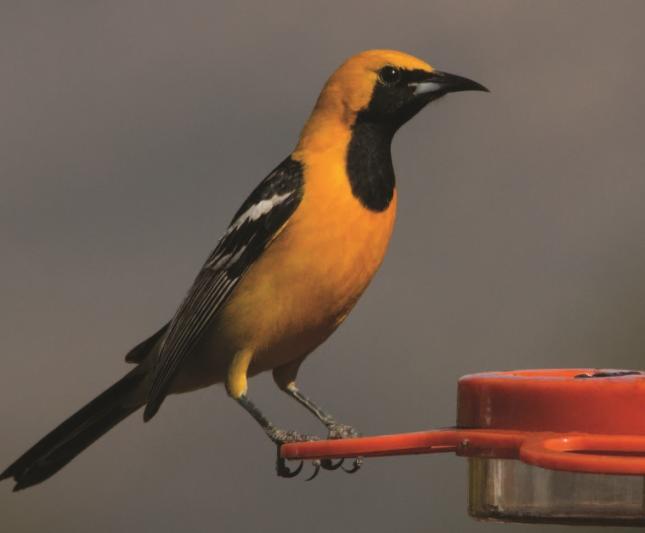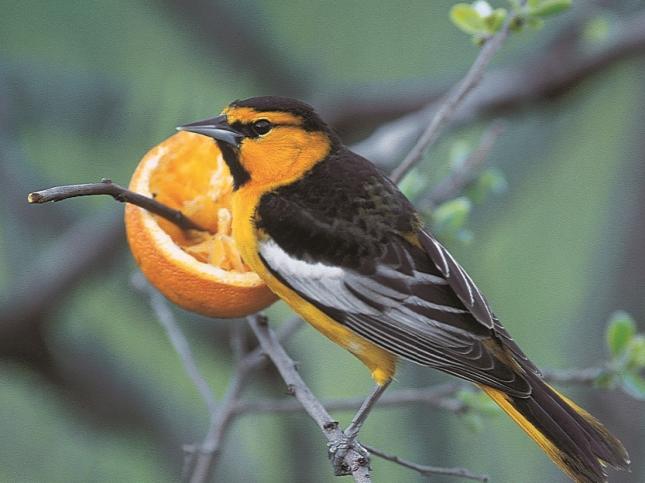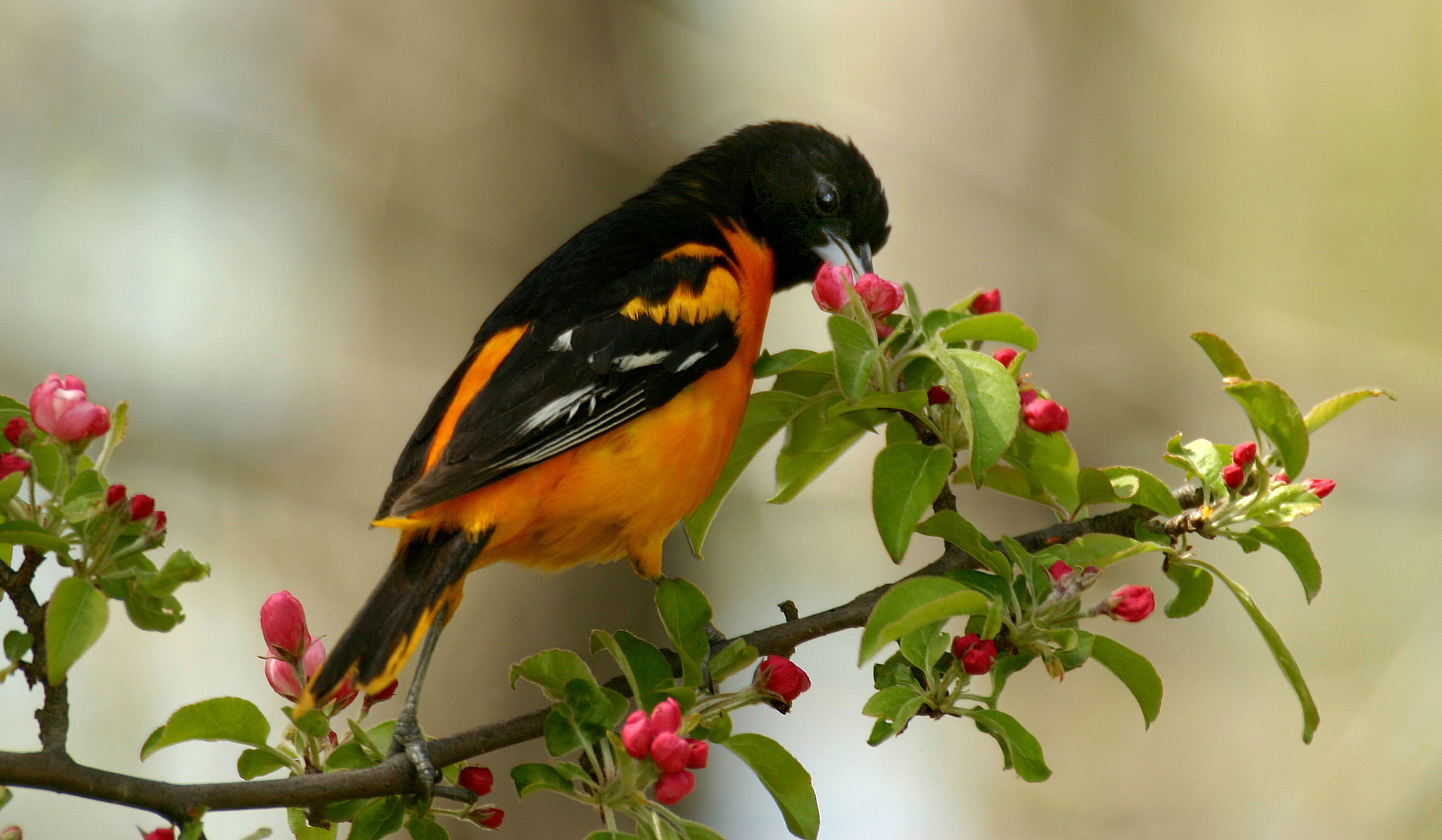
They arrive mid March. Their hanging pouch-like nests are woven with thousands of stitches and knots, all tied just with the beak,. These masterpieces are the creations of our local Bullock’s and Hooded Orioles, using plant fibers, grasses, vines and tree bark. They weave them high in trees, often in palms.
Left: Hooded Oriole Male on oriole feeder
The female oriole does most of the nest building, and she is the only one to incubate the eggs and brood the chicks after they hatch. She does get help from her mate to feed the chicks, which is good, because the whole process from egg laying to fledge is only about 30 days. Orioles need to get the chicks flying and growing, because they will start to leave back to Mexico in September. That may be why parents often guide chicks to the nectar feeders or jelly offerings so they can grow up fast.
One of North America’s most popular fruit-eating birds is the oriole. Of our nine species, the Baltimore is common and widespread in the east while the Bullock’s is common in the west.
 Our Bullock’s Orioles used to be considered the same species as the eastern Baltimore Oriole, but genetic studies showed they are two distinct species. Bullock’s Orioles were named after William Bullock and his son for their ornithological work in Mexico in the early 1800s.
Our Bullock’s Orioles used to be considered the same species as the eastern Baltimore Oriole, but genetic studies showed they are two distinct species. Bullock’s Orioles were named after William Bullock and his son for their ornithological work in Mexico in the early 1800s.
Right: A Bullock’s Oriole enjoys an orange half

Both the Hooded and Bullock’s are large songbirds, about eight inches long, but the Hooded Orioles are slimmer. Their “hoods” are yellow, not black. They eat mostly fruits, and enjoy them as nectar or jellies, if they can get them. They add flying bugs to the menu, especially when they have growing chicks.
They arrive mid March and quickly get busy with nest-building and egg-laying so they can leave by September. You can attract them to your yard by having nectar available when they are scouting for a nest location, as well as cut oranges and a dish of Birdberry jelly. You also can help to supply them with additional nesting materials, such as natural-fiber yarn, twine or string pieces less than six inches long.





